About the Tessellation Segmentation Scope | |||||
|
| ||||
Tessellation Segmentation aims at rebuilding a BRep from a mono-cell
tessellation mesh (that is, a visualization or procedural mesh), that represents a mechanical
shape with canonical shapes such as planes, cylinders, cones, spheres, tori, and few free
shapes. 
Note:
Assemblies are processed part by part.
Tessellation Segmentation proposes two modes:
- Automatic
- Manual (when only a partial reconstruction is required), where you process well-defined areas as
shown below.

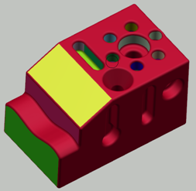
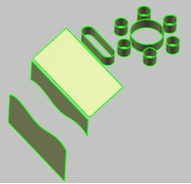
As the quality of the generated BRep depends directly on the quality and precision of the input tessellation, verify that:
- The tessellation is a tessellated mesh, not a digit mesh:
- This tessellated mesh is valid

- This digit mesh is not valid
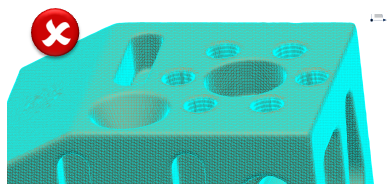
- This tessellated mesh is valid
- The tessellation is the output of a CAD modeling, relying on a parametric definition:
- This tessellation is valid
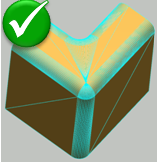
- This tessellation is not valid
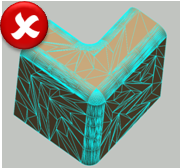
- This tessellation is valid
- The chord error of the tessellation must be small enough for the tessellation to be true
to the part, especially in the connection areas, or in areas with a small radius.
- This tessellation is valid

- This tessellation is not valid

- This tessellation is valid
- There are no free edges: further edition in Natural Shape requires that you generate a solid. Although the absence of free edges does not guarantee a solid can be generated (the quality and precision of the tessellation have a major impact on this capability), it is a condition to generate one.
- The tessellation is clean (without non-manifold elements, duplicated triangles, corrupted triangles, too thin triangles,...). A thorough control of the tessellation quality is required.
Note:
When you select it, the tessellation is analyzed. If problems are found, that prevent
the segmentation, the result of the analysis is displayed to help you solve the
problems.